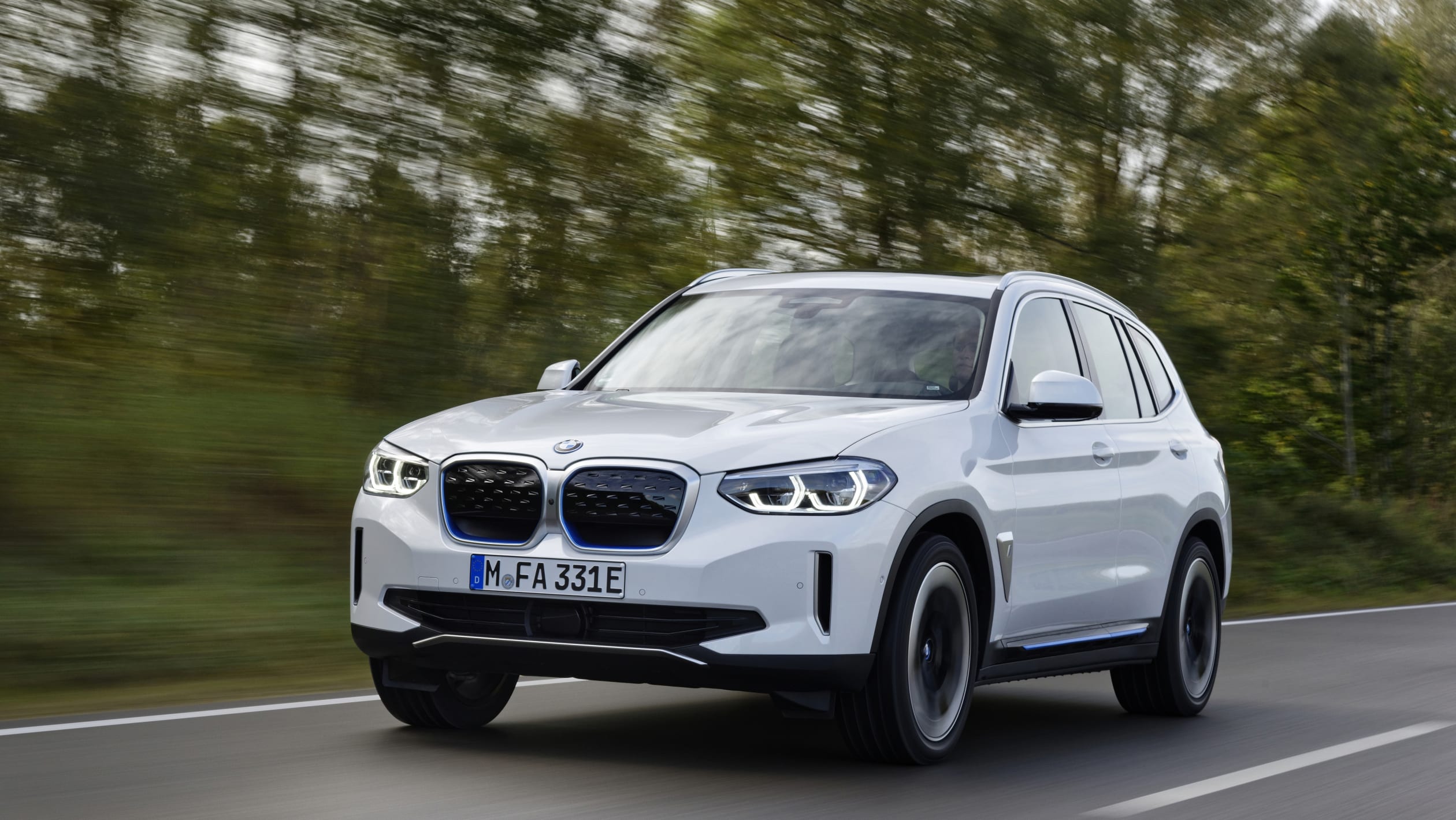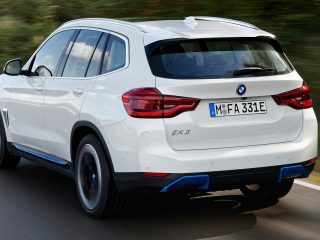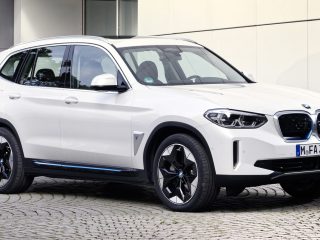Given the ingenuity and brilliance of the i3 back in 2013, it’s difficult not to feel a little underwhelmed by this iX3.
BMW’s trailblazing i3 and i8 set out a pretty bold and exciting statement for what the German manufacturer’s electrified future was going to look like. With their sci-fi looks and space-age tech, they offered a solid vision on what the cars of tomorrow were going to be like.
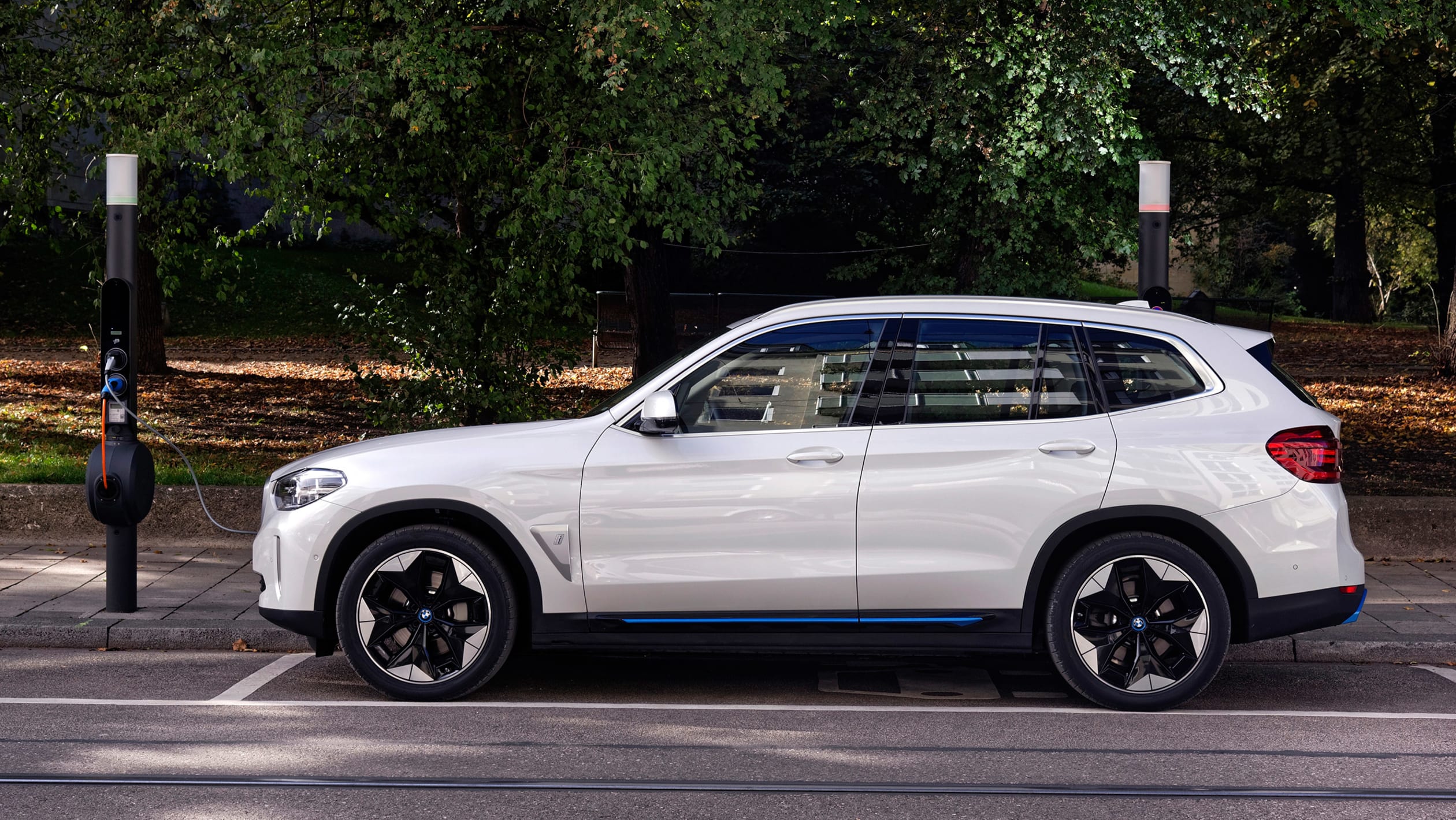
What we have here, the all-new BMW iX3, perhaps isn’t the third installment of BMW’s i line-up that we were expecting. It all looks a little bit, well, familiar. But that is exactly BMW’s intention; to all intents and purposes, this is simply an X3 that also happens to be electric.
It is expected to arrive in Australia next year, with orders already open on the model.
It’s based on the same platform as a regular petrol, diesel and plug-in hybrid X3 and is even built in the same factory; BMW proudly claims it’s the first model in its line-up that can be had with four different powertrains. Beneath the floor of the iX3, sandwiched between the wheels, is an 80kWh battery that drives a 211kW electric motor on the rear axle through a single-speed transmission. BMW says the car will cover 460km on a single charge, hit 0-100km/h in 6.8 seconds and recover an 80 per cent charge from a 150kW rapid charging unit in 34 minutes.
Against its key competitors, namely the Mercedes EQC and Audi e-tron, the BMW is down on power, but when it comes to space, range and price, all three vehicles are very closely matched.
Given that BMW’s strategy has been to transform one of its core models into an electric car, it should come as no great surprise that the way the iX3 drives feels entirely familiar and relatively conventional.
There’s virtually no telling the iX3 apart from a regular X3 once inside; the same basic cabin architecture and design has been lifted wholesale from the standard SUV, with the exception of a few flashes of blue detailing on the instrument cluster and centre console. If you were expecting a more radical design approach inside, you’ll be disappointed.
The iX3 glides off from a standstill with the faint whine from the electric motor. All of the car’s weight may be low down in the chassis but this is still a heavy car, at 2185kg, so the suspension has been stiffened to compensate for it. That’s immediately obvious from the quality of the ride, which is markedly stiffer than that of its closest rivals from Mercedes and Audi.
Even in its softest Comfort mode, the iX3 never really settles; it fidgets around, sniffing out bumps and ripples in the surface that don’t appear to be there. It’s not uncomfortable, but for a mid-size family SUV you’d expect a greater degree of suppleness. Sport mode, as you’d expect, does nothing to improve things, making the iX3 almost hop and bounce down the road.
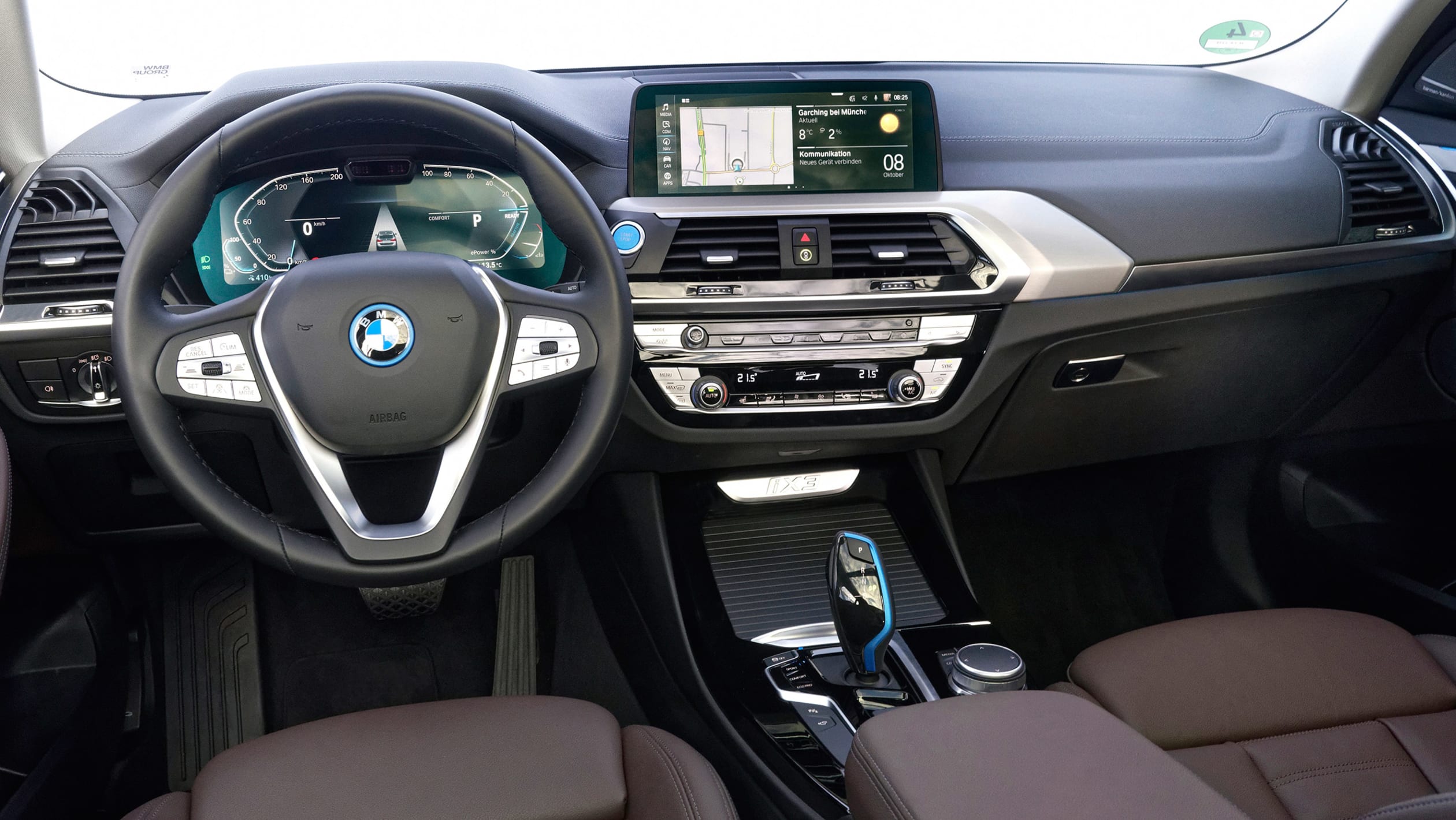
It’s evident that BMW has sacrificed a degree of refinement and comfort for entertainment behind the wheel; the stiffer chassis set-up and rear-wheel-drive configuration, combined with that low centre of gravity, mean the iX3 resists body roll pretty well. The steering is light and short on feel but it’s quick, instilling the car with a sense of urgency during faster changes in direction. Sport mode adds a bit more heft to the steering but you have to put up with the overly fidgety ride, so don’t bother.
The chassis is backed up by brisk, if not blistering, performance. The 80kWh battery drives only one 211kW electric motor on the rear axle. A 0-100km/h time of 6.8 seconds feels quick enough, but the Mercedes, Audi and Jaguar I-Pace are significantly faster and more powerful. The motor itself is remarkably quiet, with only a very faint whine as you accelerate, but you can choose to amplify the noise from the electric motor with two settings, ‘balanced’ and ‘sporty’, if you wish.
One neat piece of tech is the iX3’s energy recuperation system. As with most EVs, you can set the level of recuperation to low, medium or high, allowing you to drive without ever having to touch the brakes if you correctly anticipate traffic ahead. But BMW has also engineered an Adaptive setting, which automatically modulates the amount of recuperation between all three settings based on the car’s speed, surroundings and how quickly or slowly the car in front is travelling.
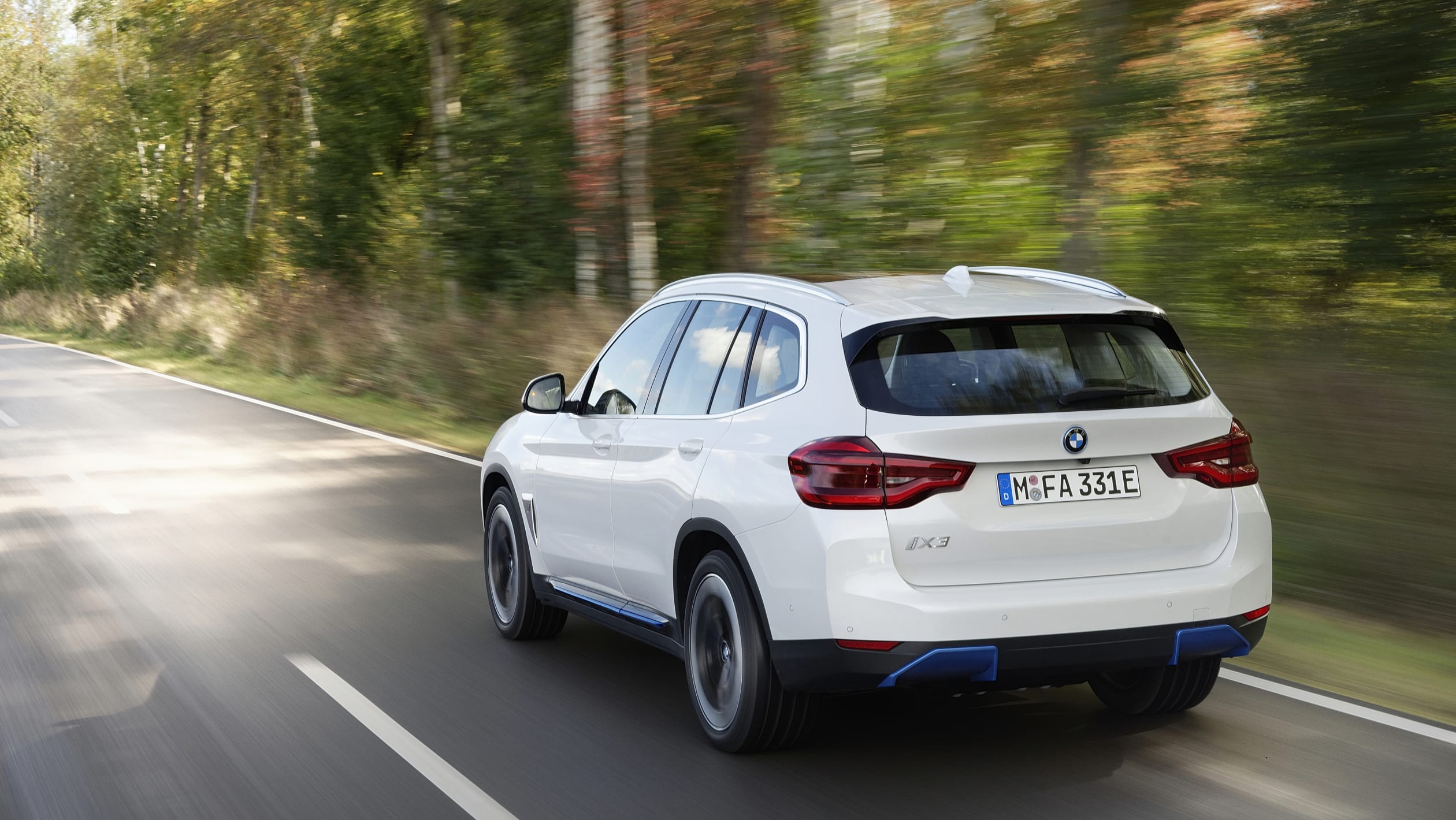
In practice, it works very much like an adaptive cruise control system, but only when it comes to braking. Lift off the throttle as you approach queuing traffic or a slower vehicle, and the iX3 calculates exactly how much regen to apply in order to keep you a safe distance from the car in front, even if that car’s speed is continuously changing. It’s a very well-executed system and once we activated it, we never switched it off.
Battery charging times and rates are comparable with those of rivals. The iX3 can accept a DC rapid charge of 150kW, which will take the battery from flat to 80 per cent of capacity in 34 minutes. There’s also a clever function within the car’s navigation system that shows you a radius of the distance you can travel with the remaining amount of charge in the battery, along with suitable charging stations that are located close where you’re expected to run out of juice.
Another new piece of tech is the digital key that is compatible only with iPhones. Owners are able to put all of the car key’s functionality onto their smartphone, which can then be shared digitally with friends or family without having to physically hand over the key. The clever bit is that owners can then set restrictions with individual digital keys – whether that’s restricting the vehicle’s speed, limiting the vehicle’s power or the volume that music can be played. Clever.
You can create up to six digital keys at any one time and discard them as and when you want as the vehicle owner. If your phone is stolen or misplaced then you can remotely delete the digital fob directly from the vehicle itself.
On a practical level, the iX3 will cater for a family of five just as well as a regular X3. The 510-litre boot is 40 litres down on the capacity of the petrol and diesel versions, but in the real world that sort of difference is negligible. Interestingly, there’s 60 litres more boot space in the iX3 than you’ll find in the plug-in hybrid X3, due to the newer, more compact design of the electric motor and transmission in this fully electric version
Given the ingenuity and brilliance of the i3 back in 2013, it’s difficult not to feel a little underwhelmed by this iX3. However, as an electric vehicle designed to feel entirely conventional and appeal to those taking the first steps into EV ownership, it is a success. It’s spacious and quiet, well built and packed with clever tech; it’s just that it doesn’t feel or look special. And when BMW has demonstrated just how ‘special’ its i cars can be, that’s a little disappointing.
Jonathan Burn
